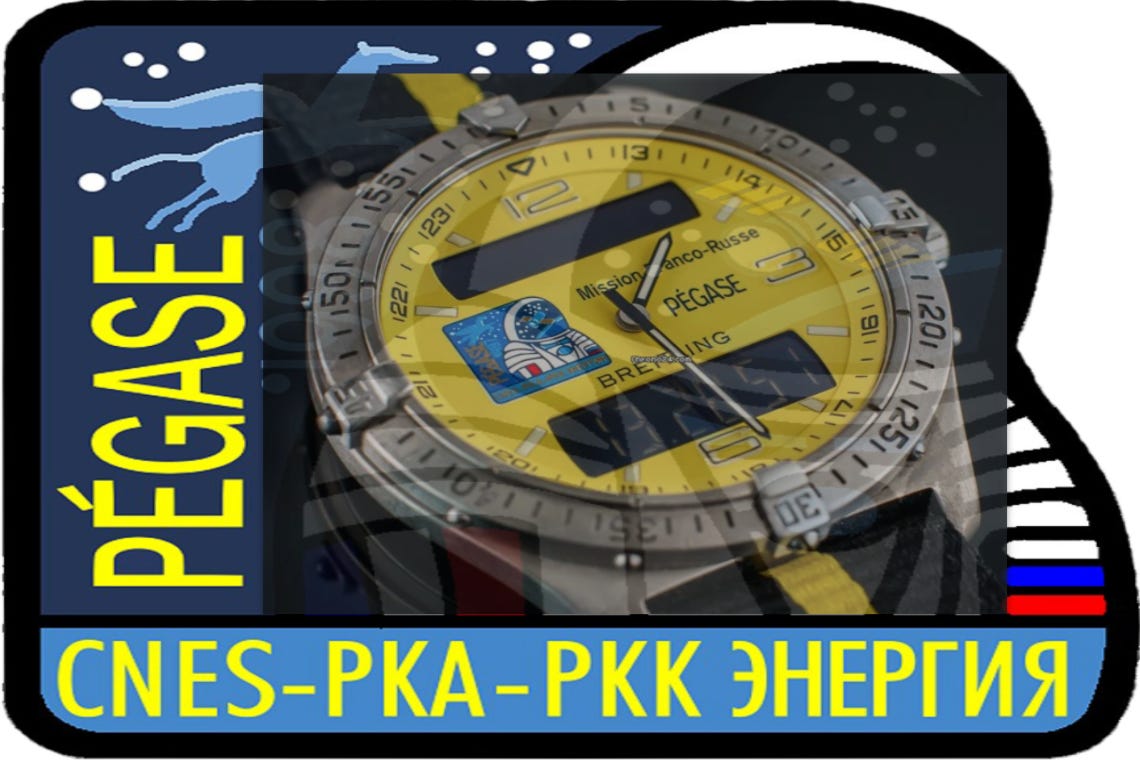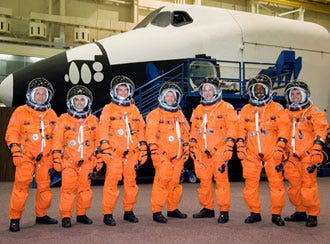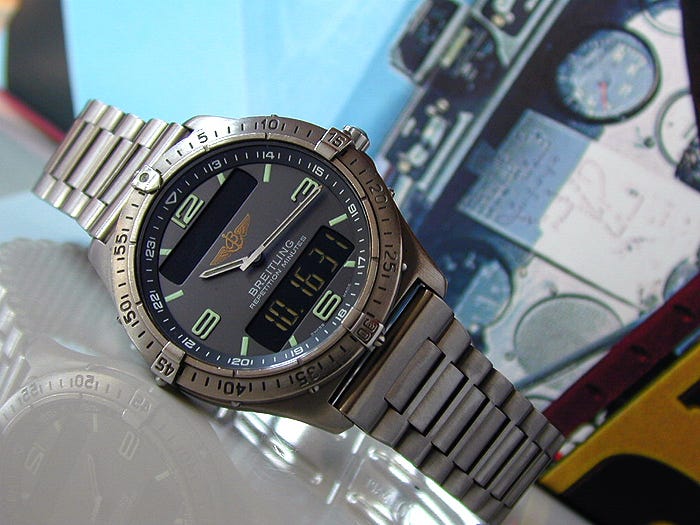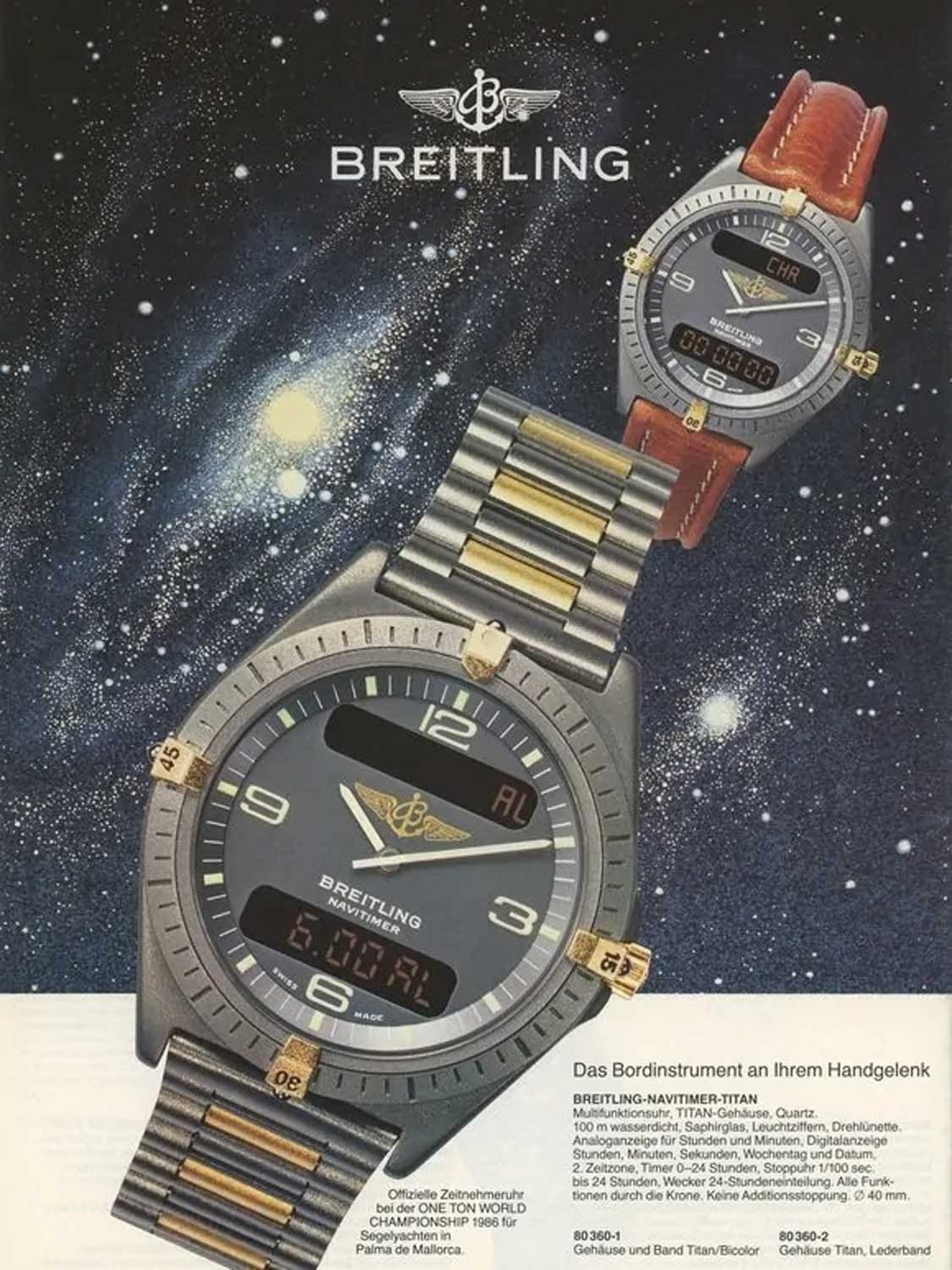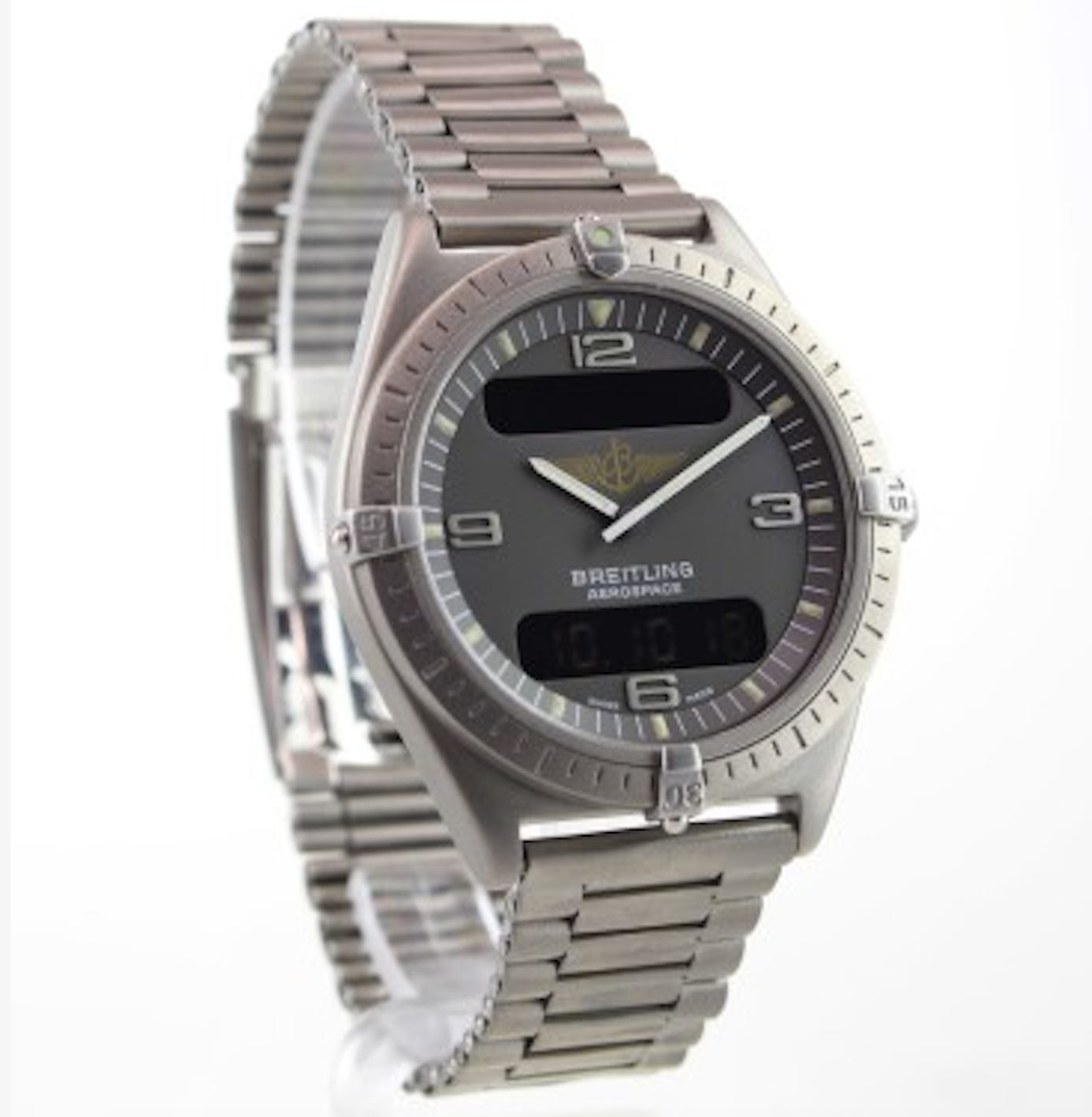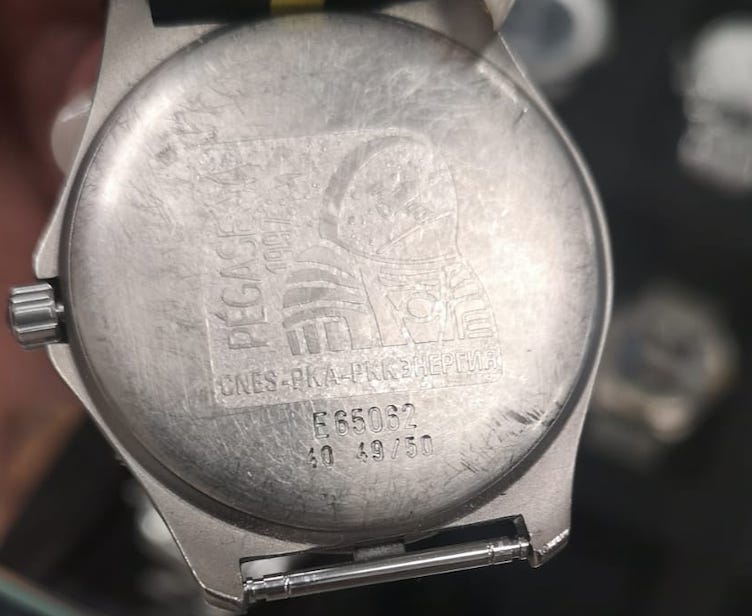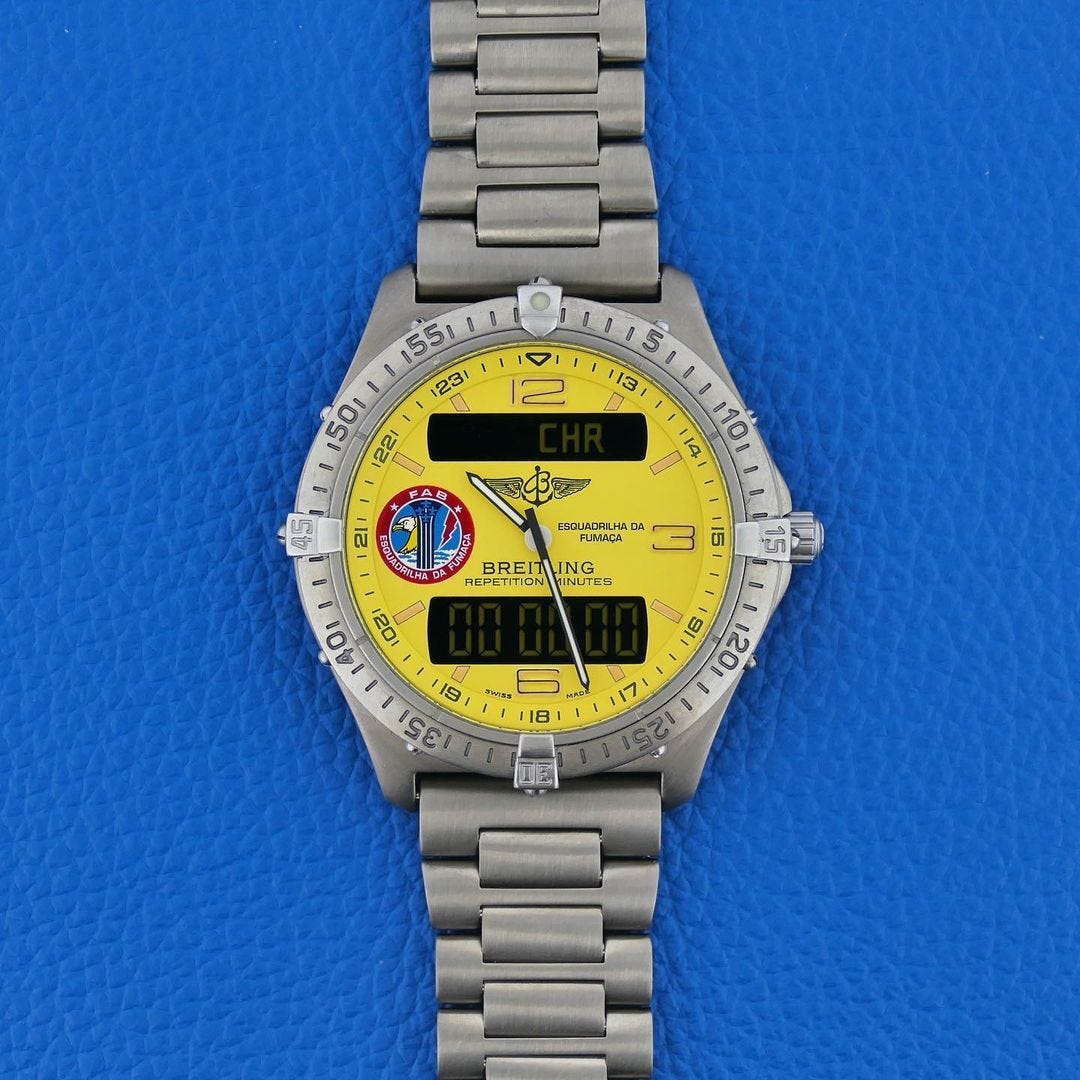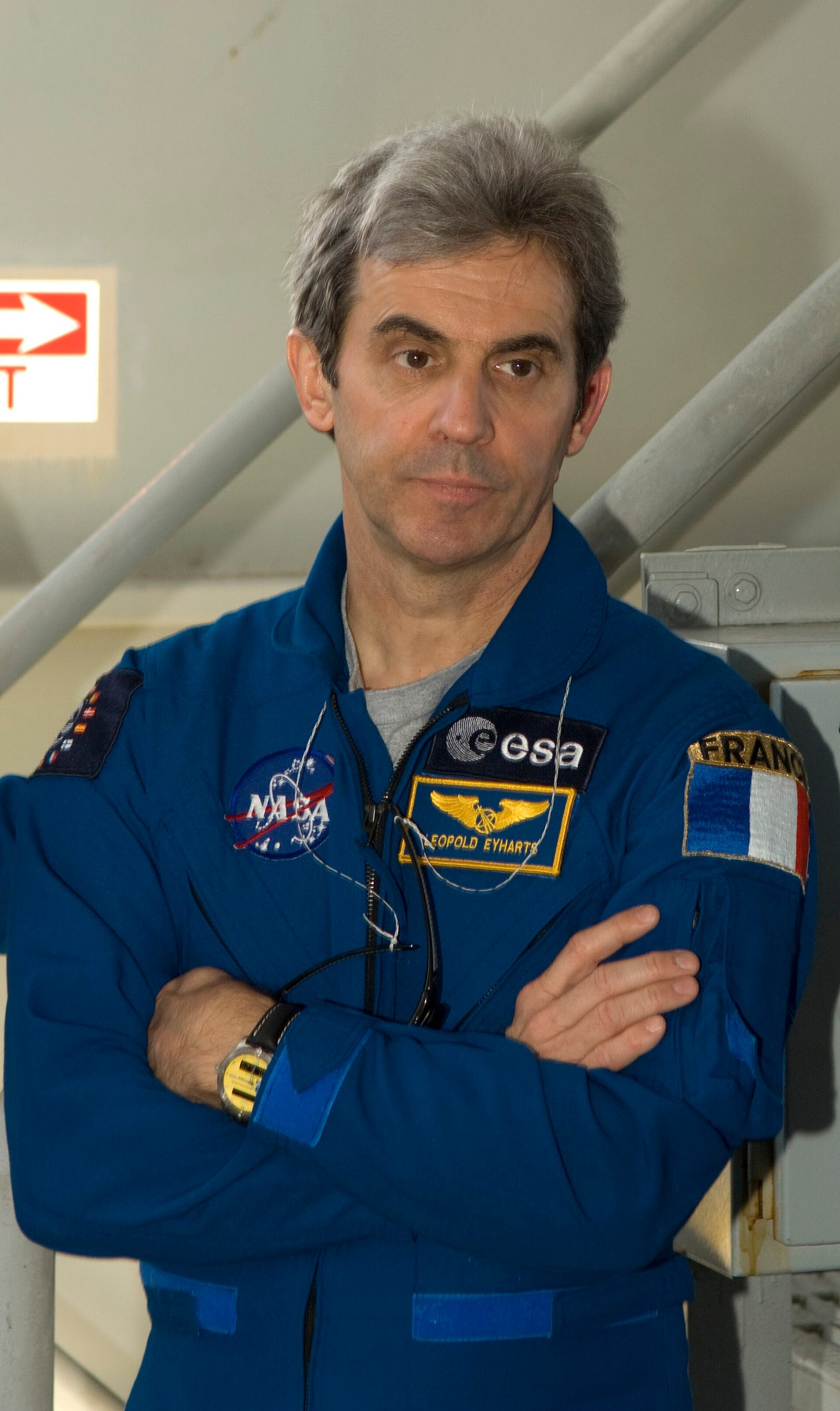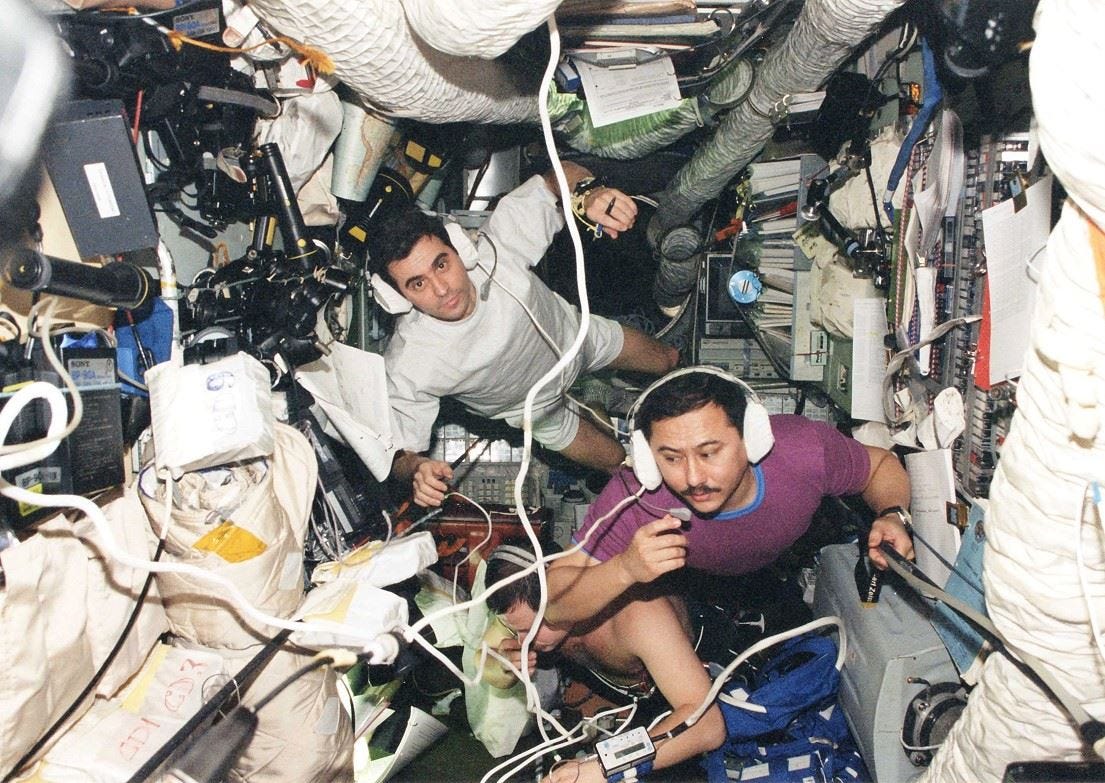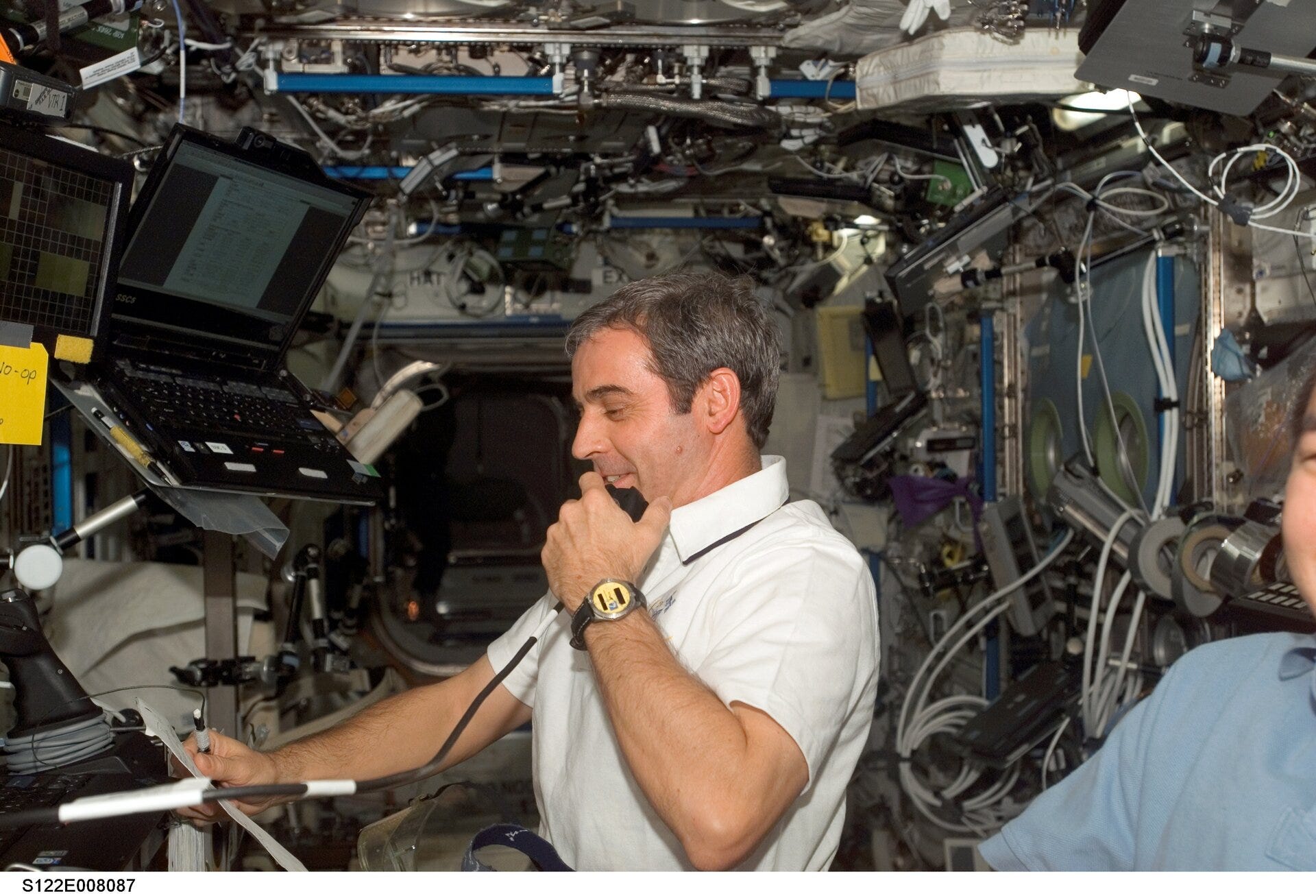Pégase - an Aerospace odyssey
Pegasus was a mythical winged horse, one of the most famous creatures in Greek mythology. This is the story of Breitling's Aerospace 'Pégase', a watch almost as elusive, because only 50 were ever made
Backstory 1 - European Space Agency (ESA) Pégase project 1998
The Pégase mission was a research program executed from January 29 to February 19, 1998 onboard the Russian Space Station Mir. During this space mission, a french astronaut, Léopold Eyharts, joined two Russian cosmonauts on the Mir.
For three weeks he performed various experiments in the areas of medical research, neuroscience, biology, fluid physics and other technologies. After completing his space mission, Léopold Eyharts formally logged 20 days, 18 hours and 20 minutes in space. He landed back on earth with the Soyuz TM-26 spacecraft on 19 February 1998.
Backstory 2 - NASA Space Shuttle Atlantis (2008)
Léopold Eyharts’ second spaceflight was an almost two-month mission to the International Space Station (ISS). He flew to the ISS on Space Shuttle Atlantis STS-122. The Shuttle launch took place on 7 February 2008. Léopold Eyharts returned to Earth with Space Shuttle STS-123 on 27 March 2008. Here is the mission link on the NASA website.
The Watch - Breitling Aerospace Pégase
To commemorate the 1998 Pégase space misson, Breitling produced a limited edition of 50 watches. The watch was based on the standard Breitling Aerospace model reference E65062 ‘Minute Repeater’, produced from 1994 - 2000 (as in picture below)
These 50 special edition watches received a yellow dial and were produced between 1997 and 2000. You can see how the Minute Repeater dial was changed to make room for the special edition details. The space mission name ‘Pégase’ which is french for Pegasus, was printed on the dial in addition to the mission logo (applied and ever so slightly relief-printed) and the text ‘Mission Franco-Russe’. The 9 o’clock hour marker and the words ‘Minute Repeater’ were removed and only the Breitling name was used.
The 12, 3 and 6 numerals received a slightly darker surface treatment, matching the darker outline on the hour and minute hands (made of aluminum, stainless steel or plated brass is my guess, I could be totally wrong). Breitling also used white hands on some of the production models.
These were one of the first titanium ‘ana-digi’ watches. They had Breitling’s B65 quartz movement, an iteration on the ETA 998.332. The display tech for the digital readouts was somewhat special. Polarization-sensitive dichroic filters - I did not know this word existed :-), but a dichroic filter is a very accurate color filter used to selectively pass light of a small range of colors while reflecting other colors - these filters enable the Liquid Crystal Display (LCD) to display in inverted mode, using gold text on a dark background which makes it easy to see during daylight.
This is great, but what about in the dark? We’re out of luck here because there is no backlight ! For what was and still is a high-end quartz watch, it seems a strange omission, but Breitling might counter by saying that’s why they included the audible Minute Repeater. To be fair, the hands and minute markers do have luminous material. In 2007 the Aerospace Avenger models finally added a backlight.
The watches had several interesting complications; Perpetual Calendar with day/date/month display, second Timezone, 24h or 12h display, Chronograph, Seconds Counter, Countdown Timer, Alarm, end of battery life indicator and the rather special audible Minute Repeater. All of this cleverly operated by a single crown. There is also a bi-directional Rotating Bezel. Another noteworthy detail is that the minute hand moves in 30 second increments. To see the watch in action, watch the 5min youtube video.
The Minute Repeater works as follows: there are beeps at three intervals, the first beeps representing the hours, the second the quarters and third the minutes. For example, 3:17 would audibly be represented with 3 beeps (3 hours), 1 beep (1 quarter) and 2 Beeps (minutes 16 and 17). So when it’s dark, you can listen to the time :-)
I always had a fascination for the Breitling Aerospace (the earliest models had ‘Navitimer’ on the dial, later to be changed into ‘Aerospace’).
The combination of analog and digital time united in one watch, the way the hands were configured, the special complications such as the Minute Repeater and Perpetual Calendar and the use of titanium make these watches pretty unique. Breitling also managed to create a design that is instantly recognizable and beautifully balanced in its execution. The anti-reflective coating on both sides of the crystal makes the glass seemingly disappear.
One note on those hands, especially the minute hand. You see in the ad above that there is a difference in the way the hands are fastened in comparison to my picture below (and some of the other models). It looks like Breitling applied these in different ways on the same model. The overlapping minute hand I always found to be a critical part of what gives the Aerospace its character.
I recently was lucky to acquire an E 56061 - exactly like the one in the Breitling ad just above - in almost new condition, really amazing for a 1994 watch. Here’s a picture.
These watches wear so light (50grams incl. the bracelet) that at times you’ll find yourself checking whether you still have it on your wrist. And made of titanium - a non-iron based metal with an extremely low magnetic field - means that you can generally sail through airport metal detectors without any fuss. Hodinkee did another piece on the Arospace recently (June 22, 2023), you can check that out here.
Another thing I noticed is that the Pégase models display the year 1997 stamped into the logo on the caseback as well as on the applied logo on the dial. According to the ESA website the official mission logo displayed the year 1998. Did Breitling decide to use the first year of production of the watch (1997) instead of the ESA mission date, or was this a mistake…..?
From the early photo’s it appears that originally the Pégase was issued to the astronauts on a leather strap - at least that is how Eyharts wore it in space. There are two period correct titanium bracelets, one can be seen on the model made for the Brazilian air force, the other is the block bracelet from the standard Reference E65062 ‘Minute Repeater’. And then there is the UTC module which could be added to the bracelet as well. But these watches look equally great on NATO or black rubber straps.
Breitling made the Aerospace model between 1985 and 2011. The yellow dial watches are extremely rare. They hardly come up in auctions and/or online sources like Chrono24. I have had alerts out for more than 10 years, I looked in vintage watch shops in cities all over the world, left my contact details with some, but nothing ever came up. Until recently, when a watch dealer in Poland had one for sale.
As far as I have been able to ascertain the yellow dial was only used in a very limited production platinum or white gold (not sure) model, a 300 piece run for the Brazilian Air Force aerobatics team (the Esquadrliha da Fumaca, picture above) and the Pégase.
In 2015 Breitling came out with a follow-up model to the Aerospace, the Evo Night Mission. In that series they issued a 30th Anniversary Limited Edition which sported a yellow dial (Reference E79362). These can be found occasionally.
For a more or less complete visual record of the Breitling Aerospace models you can take a look at the picture gallery on the Breitling Museum website (a site not formally associated with Breitling but a great source of information).
Tried and tested in Space
We know that Léopold Eyharts wore the watch in space twice, once during the Mir mission in 1998 and a second time on board the Space Shuttle STS 122 Atlantis in 2008. Amazingly I was able to find pictures of him wearing the watch on both missions.
Léopold Eyharts at NASA in 2008, his Aerospace Pégase clearly displayed on his left wrist
After some internet sleuthing I managed to find two pictures of Léopold Eyharts onboard the Mir Space Station in February 1998 with his Breitling Pégase. On the first picture below you can clearly see that he is wearing the special edition watch Breitling created for the occasion.
The second picture is less clear but when you blow up a section, you can just about make out that yellow dial on his left wrist (both pictures taken onboard the Mir Space Station, 1998).
Almost exactly 10 years later Eyharts wore the same Breitling Aerospace Pégase during his 2008 Space Shuttle mission onboard the STS-122 Atlantis
Another picture of Eyharts wearing his Breitling during the Space Shuttle mission in 2008, in this case paired with what looks like an Omega Speedmaster (of course :-).



